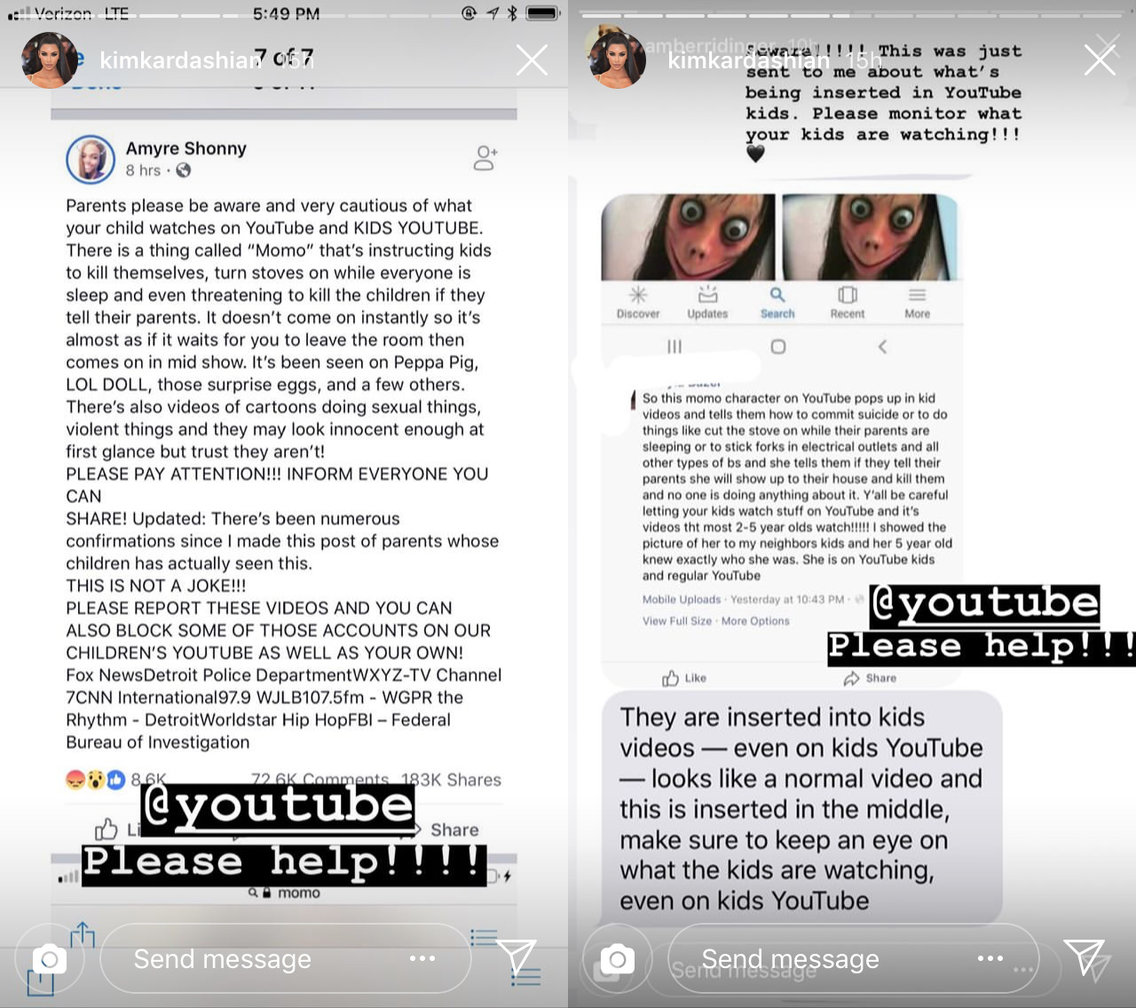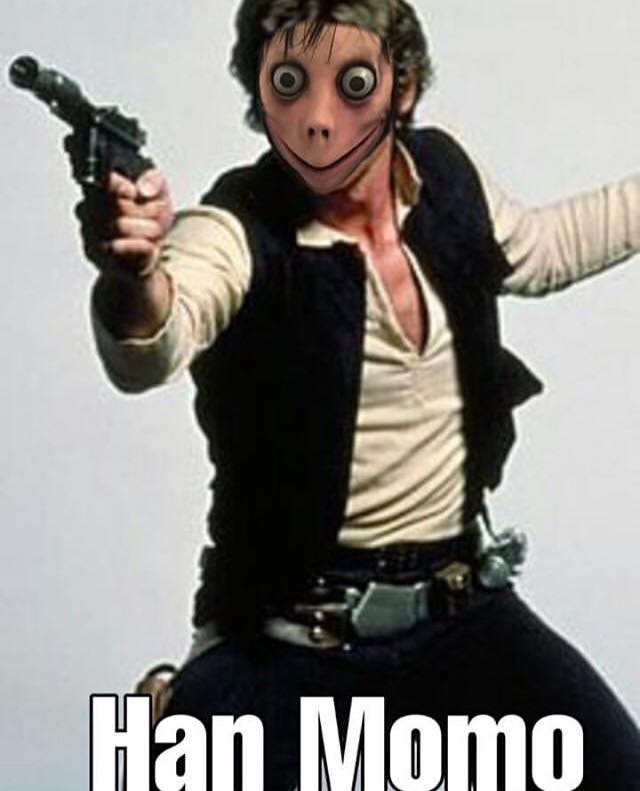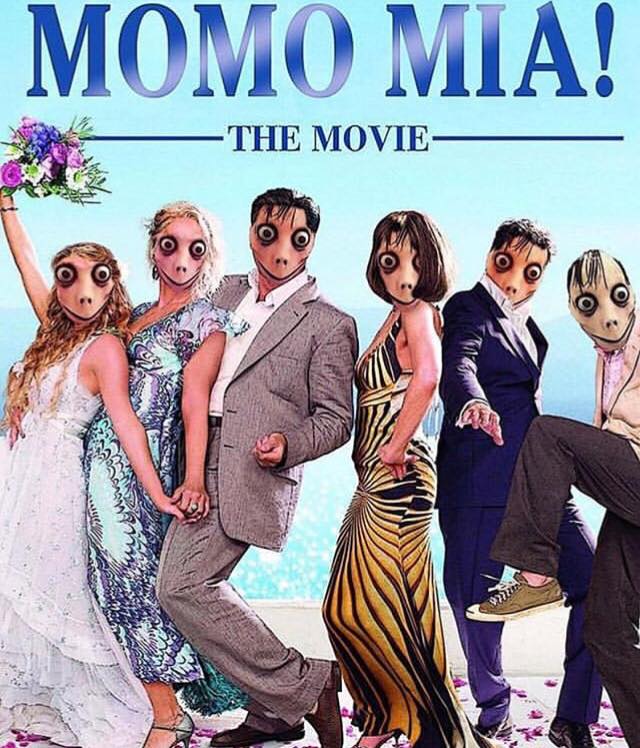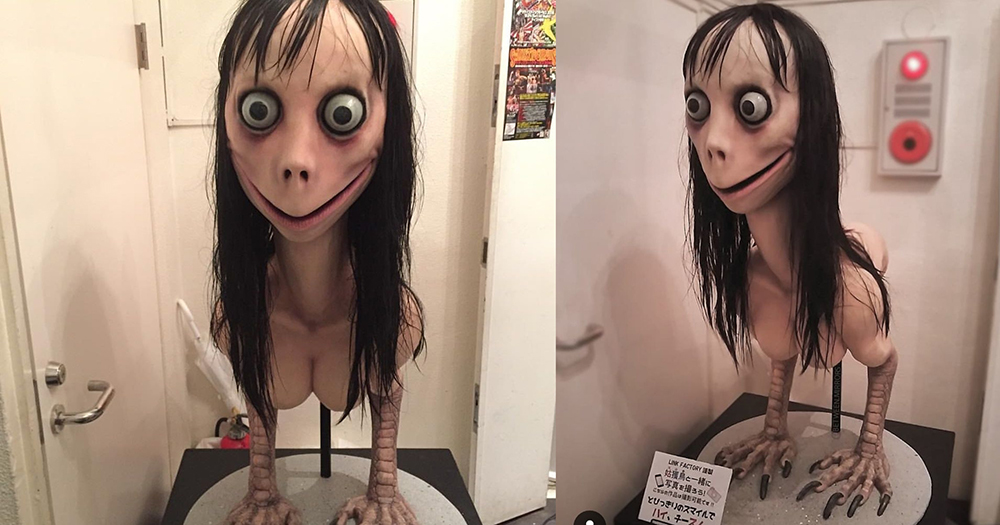You might have heard of the so-called "Momo challenge" where a particularly unsettling female figure has been linked to online child suicides or instances of children harming themselves.
As reported by Yahoo! News UK, the challenge goes something like this:
- Children are contacted on social media by the Momo figure,
- The figure threatens children into doing acts of harm or self-harm,
- These acts can include committing suicide.
The challenge was initially picked by media outlets such as Yahoo! News and even by celebrities such as Kim Kardashian, who took to pleading with YouTube for help on Instagram, over the alleged appearance of Momo in advertisements within children's videos.
 Screenshots from Kim Kardashian Instagram
Screenshots from Kim Kardashian Instagram
Challenge is a hoax
Here's the thing though -- the Momo challenge is a recurring viral hoax, as reported by The Atlantic.
Previously, the hoax had spread throughout the Latin American region and Spanish-speaking countries in 2018.
Insider reported that this was to due to the suicide of a 12-year-old girl in Argentina having been linked to the figure.
However, this link could not be confirmed by Argentinian authorities.
Additionally, YouTube has since reiterated that there is no evidence of videos on its platform promoting the Momo challenge.
We want to clear something up regarding the Momo Challenge: We’ve seen no recent evidence of videos promoting the Momo Challenge on YouTube. Videos encouraging harmful and dangerous challenges are against our policies.
— YouTube (@YouTube) February 27, 2019
That being said, YouTube elaborated that while images of Momo for the purposes for discussion, news and education are allowed, the images are banned from the YouTube kids app.
YouTube also clarified that it has since put in place safeguards to ensure the images do not appear in content featured on YouTube Kids.
Momo's origins -- a Japanese sculpture from an art exhibition
As for the figure of Momo itself, its origins are rather mundane as well.
In a separate article, Insider reported that Momo is really a sculpture that was put on display at an art exhibition in 2016.
Titled "Mother Bird", the sculpture was made by Japanese artist Keisuke Aisawa, for a Japanese special-effects company called Link Factory.
As highlighted by Insider, the full image of the sculpture shows that the head of the figure is attached to the upper body of a woman that stands on bird-like clawed feet.
Here are some Instagram posts of the sculpture:
Insider added that the sculpture went viral after the first Instagram image appeared on a Reddit thread under r/creepy with only the head shown.
And it was sometime after its appearance on the thread, that the image eventually received its name of Momo, although how it did so is unclear.
Meme material
In any case, it would appear that the image has become prime material for memes and parodies, now that it has been debunked as a hoax.

 Photos from The Least Interesting Man in the World Facebook
Photos from The Least Interesting Man in the World Facebook
Fixed her..not so scary and intimidating anymore #momo #MomoChallenge pic.twitter.com/YkWg1eHYPM
— 𝒟𝑒𝑒 (@DeniseScott19) February 27, 2019
https://twitter.com/ambermruffin/status/1101157375543832577
the only Momo ill be ok with #MomoChallenge pic.twitter.com/uRelkKd43h
— jchtl (@eatsleepsucces5) March 2, 2019
Which is a far better use of the picture than the fear-mongering it has been subjected to across some portions of the media.
Safe for children
That being said, American-based media Vox reported that YouTube still has some ways to go in ensuring the platform is safe for children, due to the presence of issues far more serious than the "Momo challenge".
Bloomberg reported that companies such as Disney and Nestle have pulled their advertisements from the platform after Wired ran a report which revealed that a soft-core paedophilia ring had established itself on YouTube.
The BBC explained that this was done by paedophiles leaving obscene or sexual comments in the comments section of videos featuring minors.
These comments would also signal content of interest to other paedophiles.
YouTube has since put out a separate statement saying that it has disabled all comments on videos featuring children.
What's more, a real video promoting suicide was also found spliced into several videos for the Nintendo game Splatoon, on YouTube and YouTube Kids, the Washington Post reported.
Free Hess, the paediatrician who discovered the video, was quoted by the Washington Post as stating:
"I think our kids are facing a whole new world with social media and Internet access. It's changing the way they're growing, and it's changing the way they're developing. I think videos like this put them at risk."
In response to her discovery, YouTube was quoted by CNN as stating:
"We appreciate people drawing problematic content to our attention, and make it possible for anyone to flag a video. Flagged videos are manually reviewed 24/7 and any videos that don't belong in the app are removed. We've also been investing in new controls for parents including the ability to hand pick videos and channels in the app. We are making constant improvements to our systems and recognise there's more work to do."
Top image collage from j_S_rock Instagram and between.mirrors Instagram
If you like what you read, follow us on Facebook, Instagram, Twitter and Telegram to get the latest updates.
